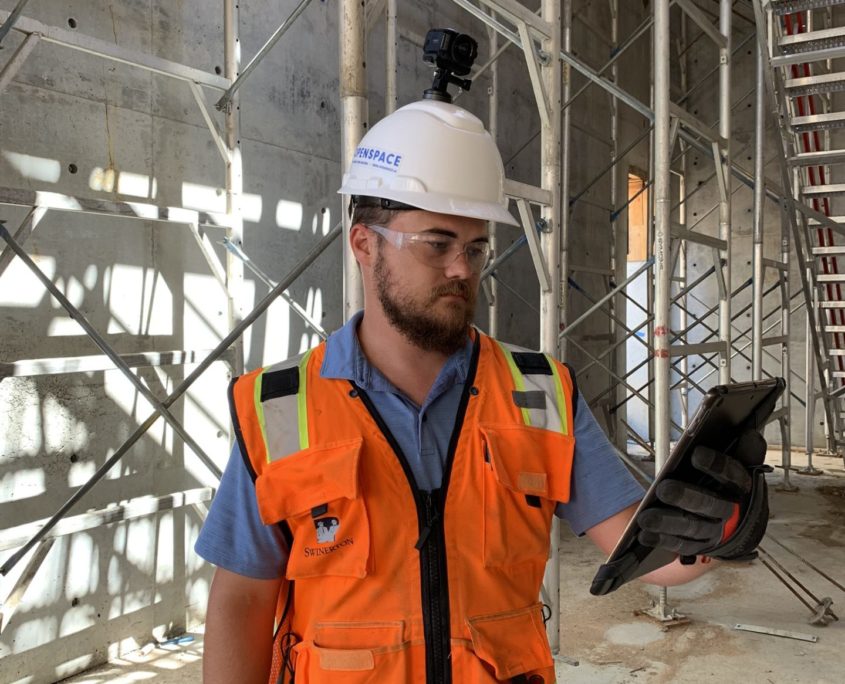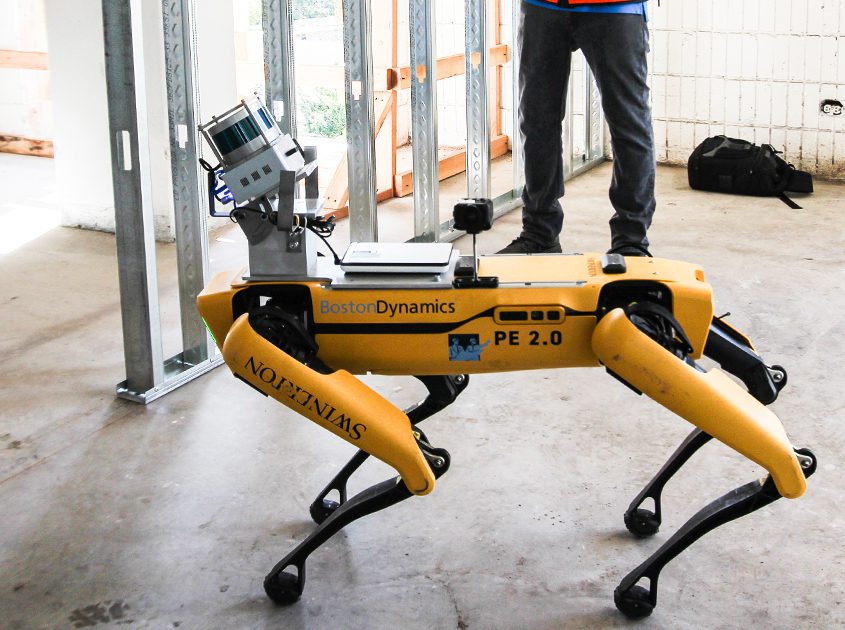Transitioning through COVID and Realizing Technology Benefits
While the healthcare industry has accelerated through the COVID-19 pandemic with many organizations forced to adapt to new technology and embrace telehealth at a pace unexpected and unplanned, the construction industry has also adapted to meet the new challenges.
From the way meetings are managed, how subcontractors bid work, and the support services offered during design, contractors have quickly adopted new technologies to stay competitive, while ensuring workforce safety, and providing new benefits to clients through various tools.
Matterport and OpenSpace
Matterport and OpenSpace are different technologies that offer similar functions: virtual snapshots of existing spaces at a point in time. Benefits of these technologies remain instrumental during COVID, while their offerings will continue into post-COVID construction. Each technology has its own advantages. Matterport takes more time but produces higher quality images; OpenSpace takes less time, but outputs lower quality images. Both programs output a digital reconstruction of the existing space that allows project teammates to virtually tour the site on their own timeline, as needed, while reducing the number of people walking through an occupied healthcare facility.
Through these platforms, communication during design coordination meetings with end-users improves as they can pinpoint and drive detail into their challenges and opportunities within their spaces. Project teams can work remotely but informed of progress.
Viewing the digital files improves subcontractor understanding by allowing them to walk the space and see intricate details often missed when taking stationary photos, resulting in more comprehensive pricing and scheduling.
During design kick-off meetings, these technologies replace the need for each project teammate to walk the space and take photos of those items important to them. With a single link, individuals can tour the space from their computer with information and details at their fingertips.
Practical application of this technology fostered coordination among Swinerton, the design team, end-users and subcontractors on a recent electrophysiology (EP) lab renovation on a major Colorado hospital campus with the following benefits:
- One person walked the potential project area, reducing risk of infection and disruption
- Reduced site walk timeframe down to 20 minutes
- All team members, including subcontractors, could revisit the space virtually as needed
- Project realized cost savings of tens of thousands of dollars and limited project contingencies through clear understanding of the space
This is just one example and the depth of advantages these technologies offer. Below, find a higher-level breakdown of some additional technologies which are proving valuable during the COVID-era and will continue to prove beneficial in the post-pandemic future.
Robotic “Dogs”
Mobile robots, particularly Boston Dynamics’ quadruped robots, walk through construction sites to document progress, measure and report data points, create a digital project twin, and compare as-builts to building information modeling (BIM). This technology is instrumental in tracking and creating consistent, real-time point cloud data.
Big Data Improves Site Efficiencies
QR codes and personnel tracking have minimized risk and maintained production during the pandemic. COVID has increased the need to accurately track personnel that visit a site to monitor worker safety, manpower counts, and manpower load to ensure safe worker separation every day. This information also allows contact tracing between jobsites as workers move between projects. Tracing provides swift communication and manages the risks COVID places on each project. While not a new technology, its application has improved protocols to keep workers safe.
Post-COVID, these technologies will improve their initially intended function of identifying inefficiencies and waste within the workday or worker experience. Better placement of stored goods, tools, and regularly used equipment in more functional and accessible locations will improve worker efficiencies for installation. Improved production tracking creates more efficient schedules and reduces trade stacking.
Daily Digital Huddles
Pre-COVID, daily stretch and flex routines prepared workers for the tasks on hand and fostered coordination across different trades.
Although some degree of stretch and flex routines still occur with appropriate social distancing, the daily huddle has become the necessary replacement of this construction staple. Slack and Trello, communication platforms used in other industries, are flowing into construction as a necessity for communication and managing both direct and indirect workers remotely.
The reduction in manpower caused by COVID isn’t just in the field; COVID has limited support staff and foremen from attending in-person meetings. Today’s superintendents need to understand how to communicate through technology tools and help others excel with this type of communication.
Prefabrication and Modular
Prefabrication and modular construction continue to advance in the healthcare environment. The control and versatility of personnel management through prefab and modular parts will continue to improve workforce safety, reduce field labor, and limit the interactions between patient services and the support role construction plays. In response to COVID, prefabrication reduces on-site manpower, yet generates efficiencies that can reduce cost by as much as 20 percent.
Post-COVID Construction
While the COVID vaccine rolls out in early 2021, it is safe to assume that the technologies employed and improved during the pandemic will not fade as they have contributed significantly to the construction industry being more proactive, more communicative, and less disruptive to occupied healthcare facilities.




